Creating minimalist middle school classroom examples can significantly enhance the learning environment for middle school students.
We will explore five effective examples of minimalist classroom designs that are both functional and inspiring.
These examples can help reduce distractions and foster a calm atmosphere for learning.
A well-organized, minimalist space allows students to focus better on their studies.
By adopting these designs, we can promote organization and clarity, making the classroom a more effective place for education.
1) Flexible Seating Arrangements
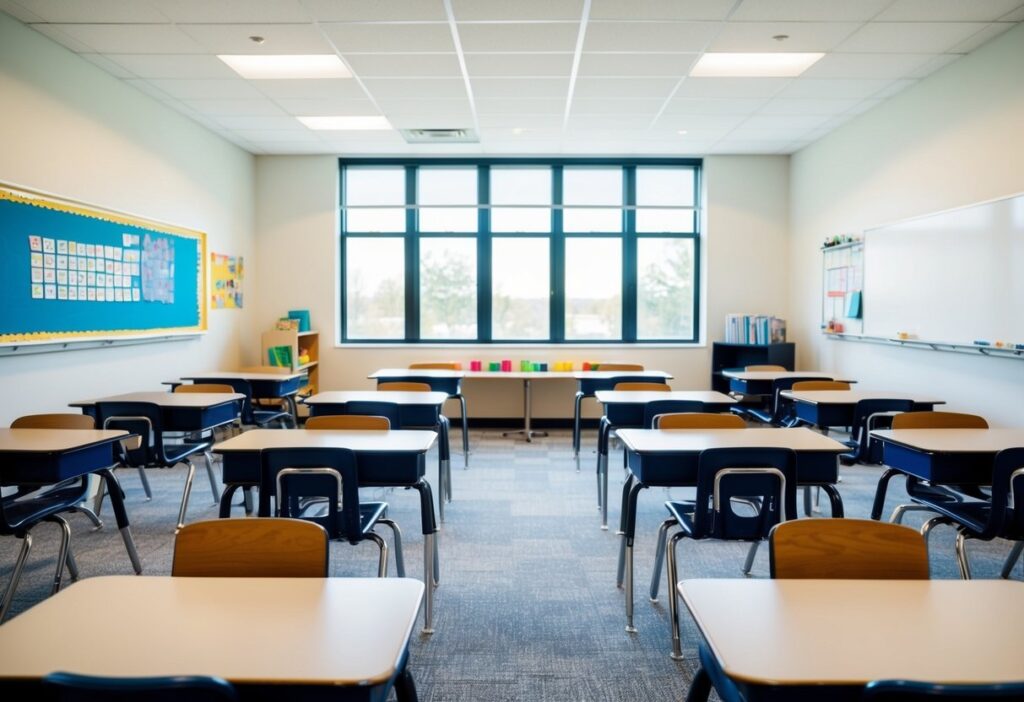
We can create an inviting classroom with flexible seating arrangements. This approach allows students to choose where and how they sit.
They can opt for chairs, bean bags, or even floor cushions.
Flexible seating promotes comfort and collaboration. Students may work better when they are not confined to traditional desks. It also encourages them to engage with their classmates and learn from one another.
We can rearrange furniture easily to suit different activities. For example, during group work, we can move seats into clusters. For quiet reading time, we can create cozy corners.
This setup supports various learning styles and needs. Students have the freedom to find a spot where they feel most focused. Flexible seating can lead to a more dynamic and interactive classroom environment.
2) Nature-Inspired Color Palette
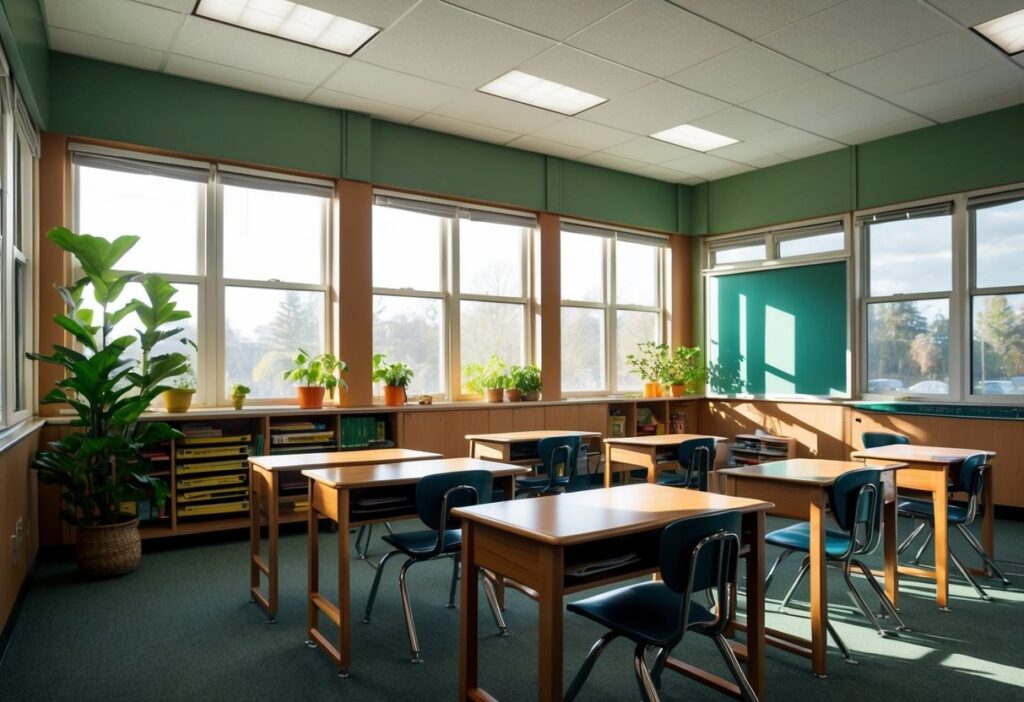
Using a nature-inspired color palette in our minimalist middle school classroom examples can create a calm and inviting space.
We can choose colors that reflect the outdoors, such as soft greens, blues, and earthy browns.
These colors help reduce stress and improve focus. Plant-inspired hues can remind students of tranquility and creativity. We can incorporate these colors through wall paint, furniture, and decorations.
Adding natural elements like wood or stone textures enhances this theme. Simple decorations, such as plants or nature images, support the color scheme.
With this type of palette, we emphasize a connection to nature. It can transform our classroom into a relaxing environment, fostering better learning and engagement.
3) Multipurpose Storage Solutions
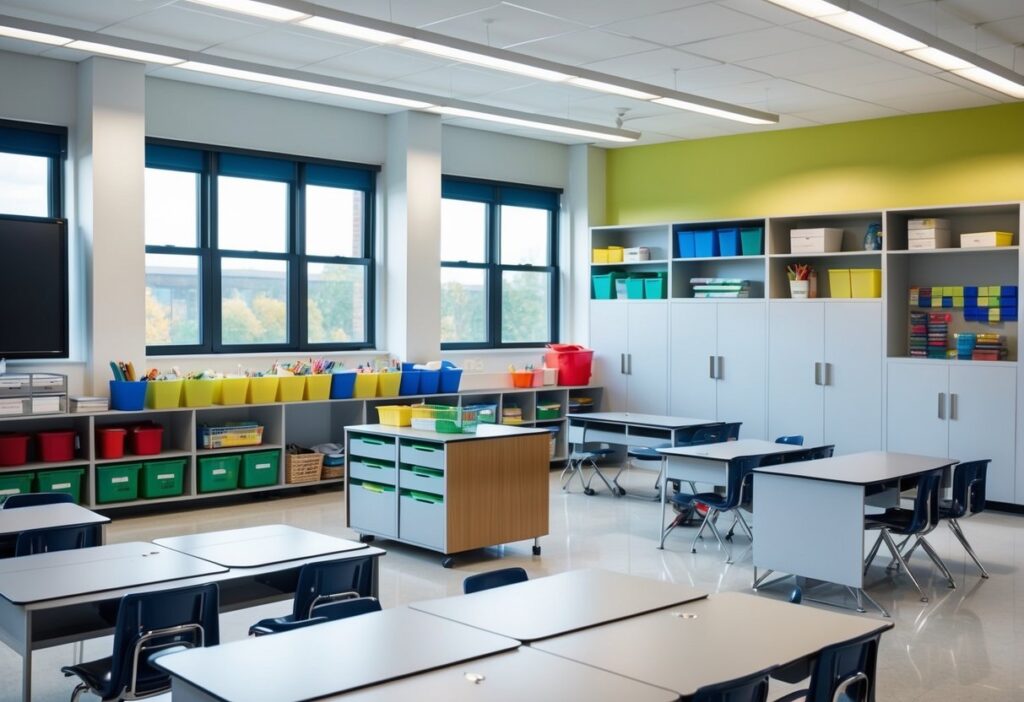
In a minimalist classroom, storage is key.
We can use furniture that serves multiple purposes. Desks with built-in drawers help us save space while keeping supplies organized.
Shelving units that double as display cases work well too. We can show student work and house books or materials. This makes the room tidy and engaging.
Using bins or baskets labeled for different items also helps us. We can quickly find what we need without clutter.
Choosing items that are stackable adds to our flexibility. They allow us to adjust storage based on our changing needs throughout the year.
These solutions make our classroom efficient and welcoming. We can keep the focus on learning while maintaining a neat environment.
4) Interactive Digital Whiteboard
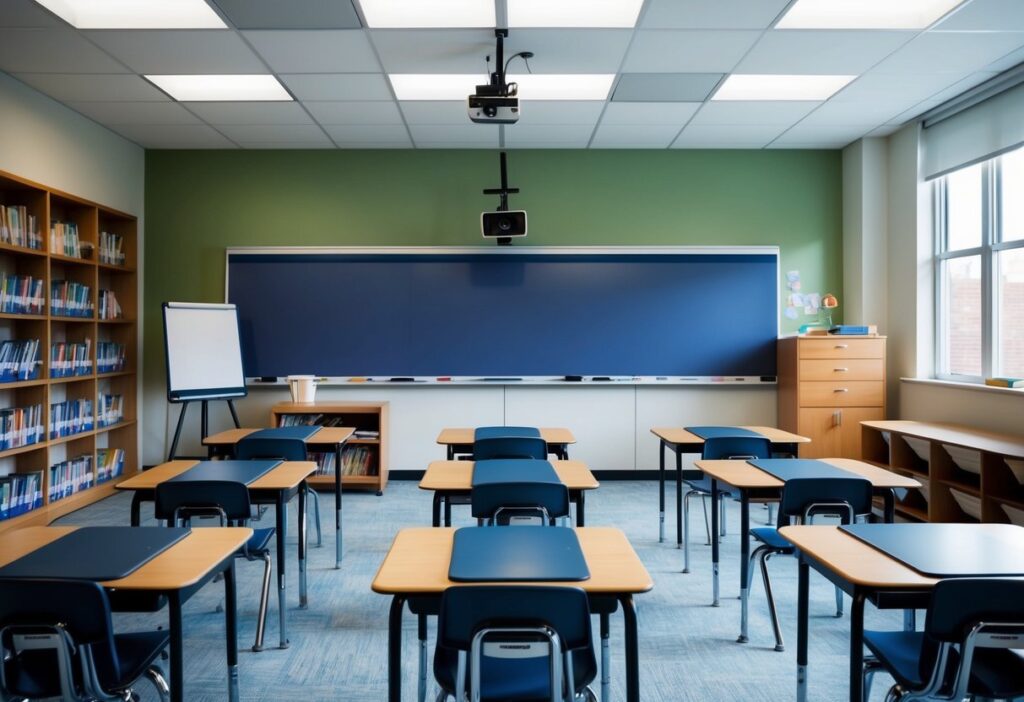
An interactive digital whiteboard can transform our minimalist middle school classroom examples.
It allows us to present lessons in a dynamic way. We can easily show videos, images, and important information at the touch of a button.
Students can also engage directly with the board. They can solve problems, write answers, or contribute ideas in real-time. This interaction makes learning more exciting.
Using a digital whiteboard helps us stay organized. We can save our notes for later use. This makes it easy to revisit previous lessons and keep our classroom focused.
In a minimalist classroom, the digital whiteboard serves multiple purposes. It reduces the need for paper and physical resources. With its clear display, it maintains a neat and tidy environment.
5) Calm Reading Nook
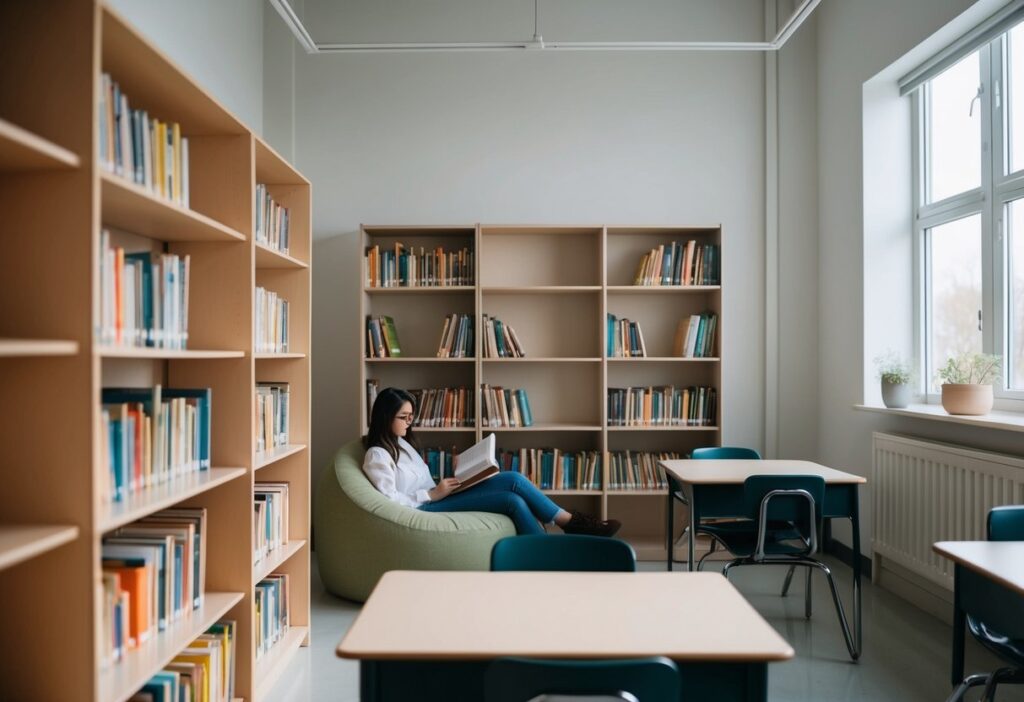
Creating a calm reading nook can enhance our minimalist middle school classroom examples. This area should be quiet and comfortable, allowing students to relax and enjoy books.
We can use soft seating, like bean bags or cushions, to make the nook inviting. Adding a small bookshelf filled with a mix of genres will encourage students to explore different stories.
Natural light is important, so we should place the nook by a window. We can also add plants for a touch of nature. A few soft rugs can make the space cozy.
This nook gives students a chance to unwind and focus on reading. A calm environment can help boost their imagination and love for books.
Benefits of a Minimalist Middle School Classroom
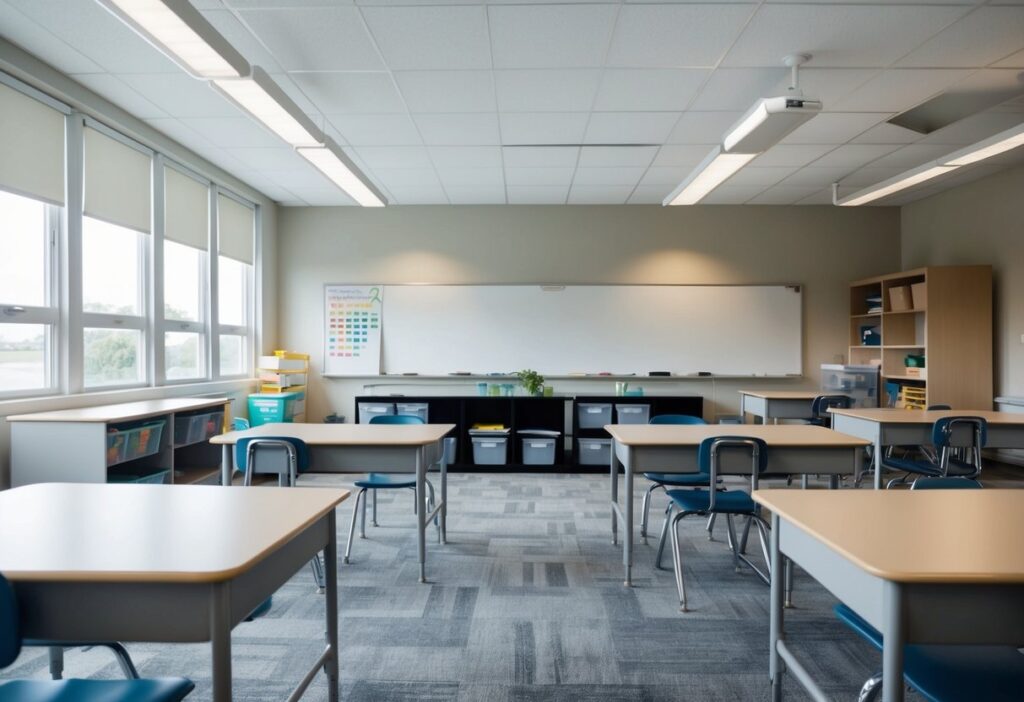
A minimalist classroom has many advantages. It helps students concentrate better and allows teachers to manage the classroom more effectively. This approach makes a positive impact on our learning environment.
Enhanced Focus and Productivity
In a minimalist classroom, the reduced clutter can lead to better focus for students. Fewer items mean less distraction. When we eliminate unnecessary objects, students can pay more attention to lessons and tasks.
Organized spaces help in structuring learning. We can place materials in a clear and visible way. This encourages students to find and use what they need without wasting time. With less visual noise, their productivity can greatly improve.
Improved Classroom Management within Minimalist Middle School Classroom Examples
A minimalist design allows for easier classroom management. With fewer items to keep track of, we can maintain order more effectively. This setup fosters a calm atmosphere where students feel comfortable.
Clear areas for specific activities help us manage transitions. For instance, separate zones for group work and individual assignments reduce chaos. We can guide students smoothly from one activity to another.
In a minimalist space, we can create routines that support learning. These routines help students understand expectations more easily. This predictability can lead to a more respectful and productive classroom environment.
Design Principles for Minimalist Classrooms
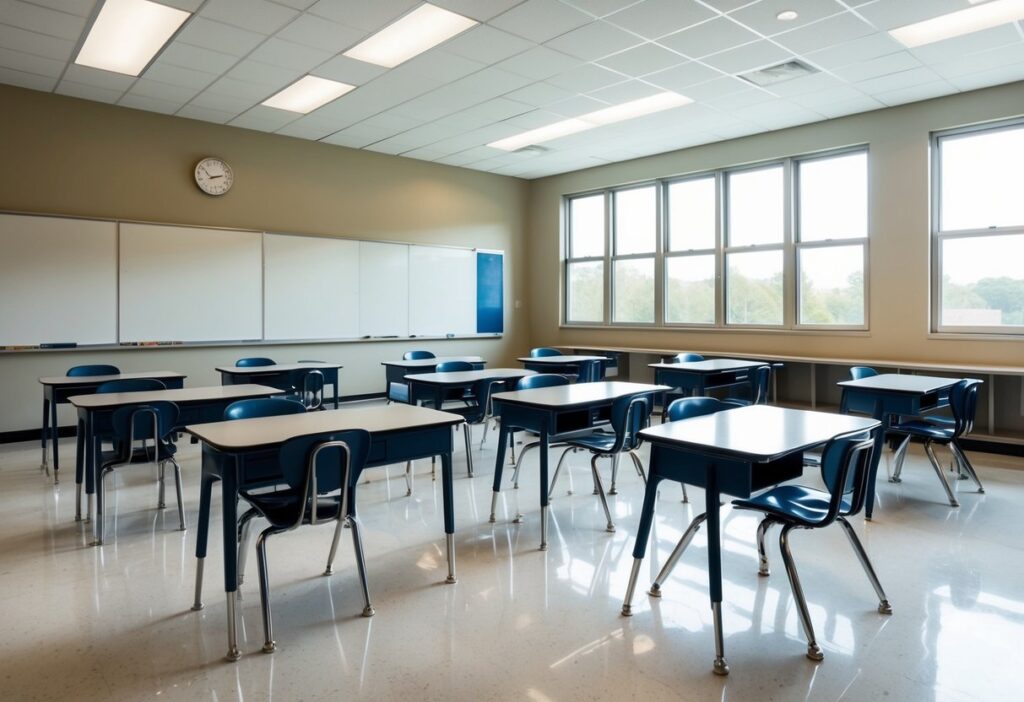
Creating minimalist classrooms involves careful attention to space and furniture. By focusing on how we use available space and choosing the right pieces, we can foster a clean and engaging learning environment.
Maximizing Space Utilization
In minimalist classrooms, every inch matters. We can achieve this by using open layouts to reduce clutter and distractions.
Using vertical space is key. We can install shelves high on walls to store materials, keeping the floor clear.
Also, consider flexible layouts. Arranging desks in circles or clusters encourages collaboration and saves room.
Using multi-functional areas, like a reading nook that can also serve for group projects, maximizes our space effectively.
Incorporating Functional Furniture
Choosing the right furniture helps maintain a minimalist design. We should opt for versatile pieces, like tables that can be rearranged easily.
Consider chairs that stack or fold for easy storage. This flexibility allows us to create more space when needed.
Additionally, furniture should fit comfortably within the room, avoiding oversized items. We can use low-profile desks that help keep sightlines open.
We can also invest in storage solutions that blend with the room’s look. Carts with wheels or under-desk bins can keep supplies organized without taking up extra space.
Implementing Minimalist Aesthetics
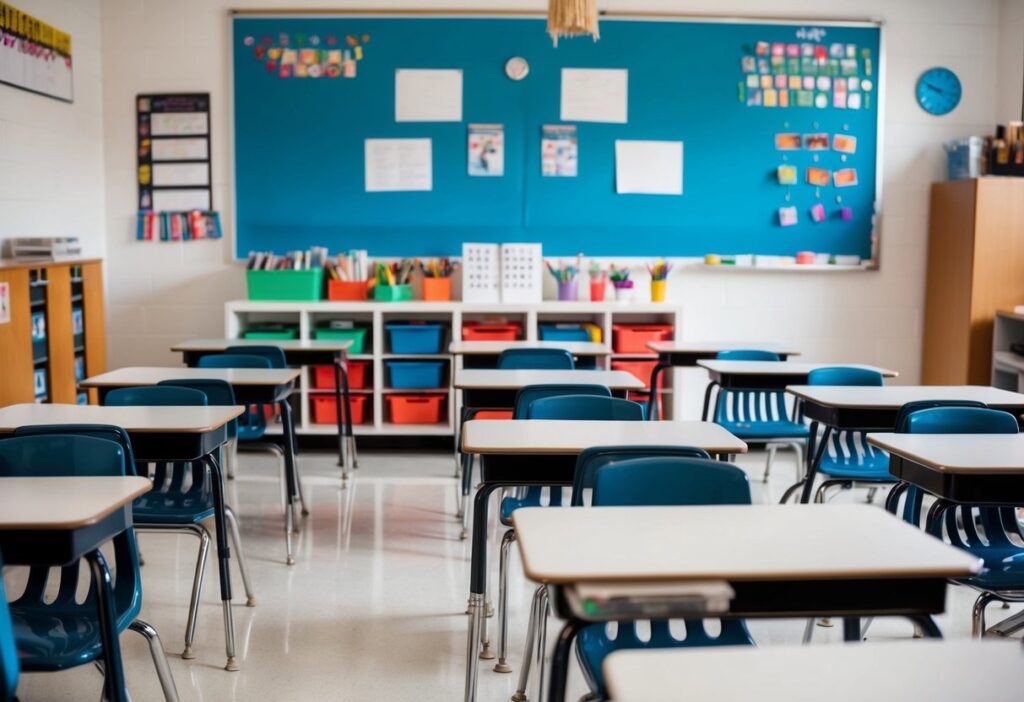
To create a minimalist classroom, we focus on a clean look and a calming atmosphere. This can be done by choosing a neutral color palette and making the most of natural lighting.
Choosing a Neutral Color Palette
A neutral color palette helps create a serene environment. We can use shades like whites, beiges, and soft grays. These colors work well together and give the space a spacious feel.
To add some interest, we can use different textures in furniture and materials. For example, pairing a smooth table with a soft rug can make the room feel cozy without being cluttered.
When selecting colors for walls and furnishings, it’s best to stick to a few key shades. This helps keep the space from feeling chaotic and allows us to create a cohesive look.
Emphasizing Natural Lighting
Natural lighting is essential in a minimalist classroom. We can achieve this by using large windows and light curtains. This brings in plenty of sunlight, making the space feel airy.
We should arrange furniture to take advantage of existing light. For instance, placing desks near windows allows students to benefit from natural illumination. This can improve focus and overall well-being.
If natural light is limited, we can use simple, soft lighting fixtures to enhance the atmosphere. Choosing fixtures with clean lines supports the minimalist aesthetic while providing adequate light for learning activities.
Frequently Asked Questions
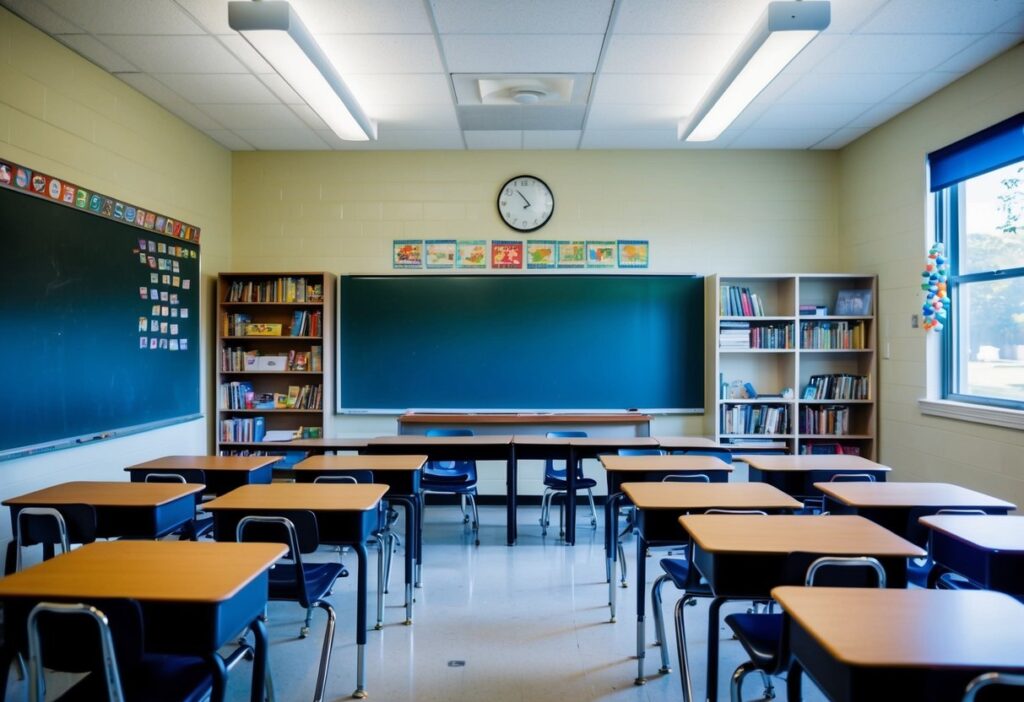
In this section, we address common questions about minimalist middle school classroom examples design. We will explore characteristics, strategies, and best practices for creating and maintaining a functional learning environment.
What are the key characteristics of a design for minimalist middle school classroom examples?
Key characteristics include flexible seating arrangements that adapt to different activities. We often see a nature-inspired color palette that creates a calming atmosphere. Additionally, multipurpose storage solutions help keep the space organized without clutter.
How can teachers effectively create an aesthetic yet functional classroom layout?
To achieve this, we can use furniture that serves multiple purposes. Arranging seating to promote collaboration and discussion enhances functionality. Easy access to resources will help make the classroom user-friendly while keeping it visually appealing.
What are some evidence-based strategies for designing clever and engaging classrooms for middle school students?
Using interactive digital whiteboards can engage students and support various learning styles. Incorporating spaces like calm reading nooks encourages students to reflect and explore within minimalist middle school classroom examples. This mix fosters creativity and focus, helping students thrive.
What considerations should be taken into account when selecting furniture for minimalist middle school classroom examples?
We should prioritize furniture that is durable and easy to move. It’s important to choose pieces that fit our classroom’s design and function. Selecting items with built-in storage can also reduce clutter and enhance organization.
How can minimalist middle school classroom examples and environments be optimized for both learning and visual appeal?
We can incorporate a balance of color, light, and space to enrich the learning experience. Creating designated areas for different activities supports both learning and visual interest within minimalist middle school classroom examples. Keeping decor simple and purposeful boosts focus without distractions.
What are the best practices for maintaining organized in minimalist middle school classroom examples throughout the school year?
Regularly assessing and reorganizing storage helps us keep the space tidy.
Setting aside time each week for cleanup encourages students to take responsibility.
Using consistent procedures for materials will also maintain organization and minimize chaos within minimalist middle school classroom examples.


